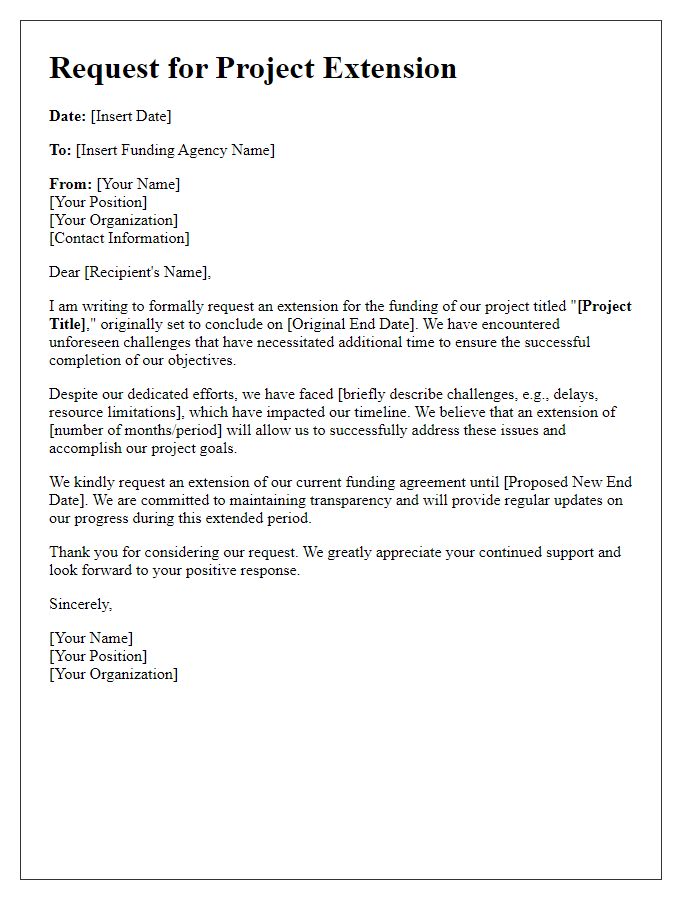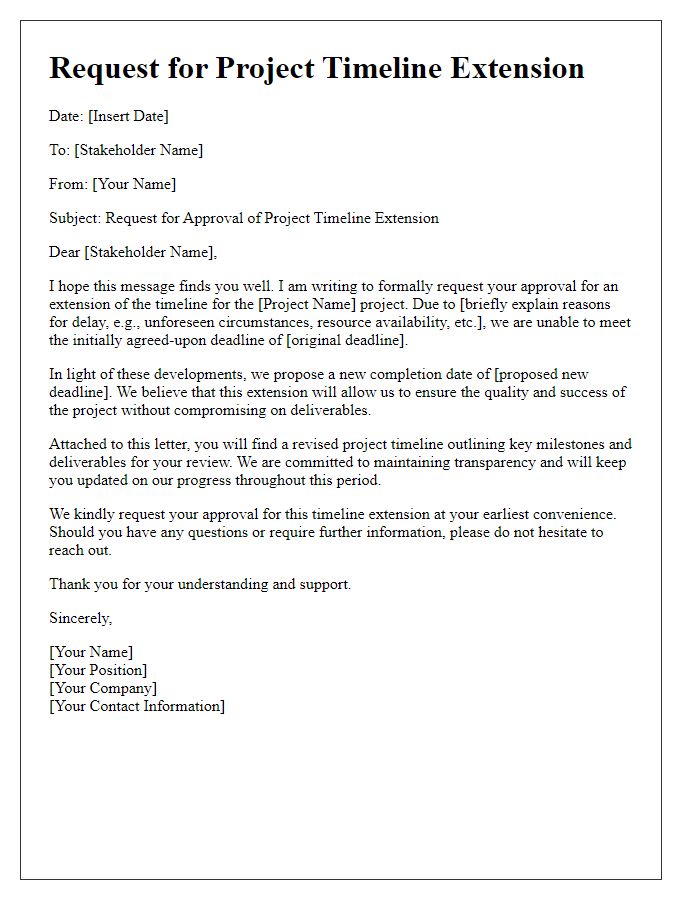Are you facing the challenge of needing more time to complete your project? Whether it's due to unexpected hurdles or the desire to enhance the final outcome, proposing a project extension can be a strategic move. In this article, we'll explore how to effectively communicate your request, ensuring it resonates with stakeholders and showcases the value of your endeavor. Ready to learn the best practices for crafting your proposal? Let's dive in!

Clear justification for extension
Project extensions can often arise due to several factors that can impact timelines and deliverables. For instance, the unexpected complexity of a research initiative, like a non-profit organization focusing on environmental sustainability, may require more thorough data collection beyond initial projections. Unforeseen challenges, such as inadequate resources or delays in participant recruitment, can hinder progress. Additionally, external events, such as recent legislative changes affecting funding or community engagement efforts, may necessitate additional time to ensure the project's objectives are met effectively and comprehensively. Ultimately, a well-articulated justification for an extension can emphasize the importance of maintaining quality and achieving the desired outcomes rather than rushing to meet arbitrary deadlines.
Revised timeline with milestones
A project extension proposal outlines the request for additional time to complete a given project, specifying a revised timeline with clear milestones. Adding extra time can be critical for ensuring quality deliverables, especially in complex projects that involve numerous stakeholders. A detailed timeline should include key dates, such as the start of new phases, expected completion dates for individual tasks, and major review points. Milestones such as the completion of design, development, testing, and final review should be explicitly stated, allowing all parties to track progress effectively. The need for this extension can arise from unforeseen challenges, resource availability, or feedback incorporation from initial phases. Clear communication is essential to ensure alignment among team members and stakeholders.
Impact analysis on project outcomes
The impact analysis on project outcomes is crucial for evaluating the effectiveness and success of initiatives within organizations. This practice involves assessing various metrics and measuring key performance indicators (KPIs) to determine the actual versus expected results. Conducting this analysis typically occurs after significant project milestones, ensuring the examination of elements such as budget adherence, timeline constraints, and stakeholder satisfaction (usually gauged through surveys or interviews). Additionally, comparing qualitative data from team feedback sessions can reveal insights into ongoing challenges or success factors. The methodology often integrates both quantitative and qualitative assessments, providing a comprehensive view of project impact and informing future strategic decisions.
Updated resource allocation plan
A proposed project extension aims to enhance deliverables by reallocating resources effectively. Current personnel includes three software developers, one project manager, and two quality assurance testers. The extension will introduce two additional developers, encouraging collaboration and innovation in coding practices. An adjusted budget of $50,000 will ensure the acquisition of necessary tools and technologies, such as agile project management software and updated testing frameworks. The project timeline will extend by three months, with a new end date of March 2024, allowing ample time for thorough testing and refinement. Stakeholders at XYZ Corporation in New York will receive regular updates through bi-weekly meetings, fostering transparency and alignment with project goals. Expanding the project scope to include user feedback cycles will lead to a more robust final product that meets the evolving needs of the target audience.
Stakeholder communication strategy
Effective stakeholder communication strategy is crucial for project success, particularly in complex environments where multiple stakeholders are involved. Identifying key stakeholders, such as project sponsors, team members, and external partners, is essential for tailored communication. Establishing clear communication channels, including regular updates through emails or meetings, ensures stakeholders remain informed about project progress and challenges. Utilizing tools like stakeholder analysis matrices can help categorize stakeholders based on their impact and influence on the project. Furthermore, implementing feedback mechanisms can facilitate two-way communication, allowing stakeholders to voice concerns or suggestions, thus fostering engagement and collaboration. Overall, a well-structured communication strategy enhances transparency, aligns expectations, and ultimately contributes to the achievement of project goals.
Letter Template For Proposing A Project Extension Samples
Letter template of project deliverable extension for team collaboration.

Letter template of project implementation extension for quality assurance.

Letter template of project extension communication for internal updates.










Comments